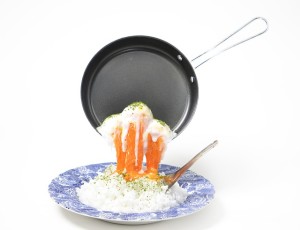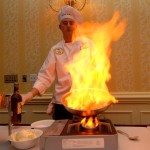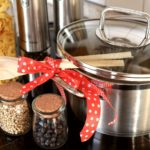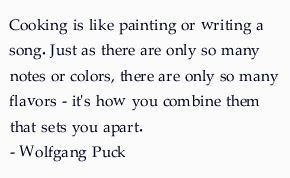However, non-stick cookware is also known to have a short lifespan. You don’t hear of people saying that their non-stick pans lasted them a lifetime. The reality is that a lot (if not all) non-stick cookware don’t last beyond a few years. The most common problem is that the interior coating peels or chips, rendering the cookware useless. Or it warps and becomes dented. If you are lucky, you won’t need to replace your pan in the next 2 years but if you are not, you might need a new piece within 3 months.
If you go through buyer reviews of non-stick cookware, you will find this two common complaints among all major brands, from those cheap cookware that costs about $50 a set like Cook N Home to high end brand names like Swiss Diamond that sell for over $500 a set. From all the time I spent scouring customer reviews on their pots and pans, a high price and good brand name is no guarantee for a long lasting non-stick cookware.
So, how should you choose your non-stick pots and pans then? Well, it is no guarantee that you will get a more durable piece, but following the few tips below might minimize the risk of having to replace it sooner.
Non-Stick Cookware Buying Guide
 Coating – The number of layers in the interior coating plus the formula composition will have a bearing on the price of the cookware. The more expensive cookware may also use patented or “branded” coating which may give it better food release (non-stick) capabilities. Generally, 3 layers of non-stick coating is a must for longer lasting pieces. The cheapest process to apply the non-stick layer is through a roller coating process. So, if you find the cooking surface of the pan to be a little rough, you will know it probably only has one or two layer of coating. The smoother the surface is, the higher is the probability of it lasting longer due to the higher number of layers. It should also have a matte finish rather than a shiny surface.
Coating – The number of layers in the interior coating plus the formula composition will have a bearing on the price of the cookware. The more expensive cookware may also use patented or “branded” coating which may give it better food release (non-stick) capabilities. Generally, 3 layers of non-stick coating is a must for longer lasting pieces. The cheapest process to apply the non-stick layer is through a roller coating process. So, if you find the cooking surface of the pan to be a little rough, you will know it probably only has one or two layer of coating. The smoother the surface is, the higher is the probability of it lasting longer due to the higher number of layers. It should also have a matte finish rather than a shiny surface.
Weight – Non-stick coating is usually applied on aluminum cookware. This is because aluminum is an excellent heat conductor. It will quickly spread the heat across the bottom to give you more even heat distribution and up the sides. The thicker the aluminum is, the heavier is the pan. Cast aluminum is usually thicker and heavier than stamped ones and is more expensive. Because it is thicker, it will also be less likely to warp. However, it will be heavy, so check the weight before you buy.
Oven-safe – If you intend to put your non-stick cookware into the oven, you will have to look for the maximum temperature level that it can withstand up to. A lot will be oven-safe up to 350°F although you should be able to find a few that can handle higher than that. If it is not mentioned anywhere on the list that the cookware is oven-safe, there must be a reason for it. Bear in mind that even handles can melt in the high heat of the oven if it is not made of the right material.
Dish-washer safe – Not all non-stick cookware is dish-washer safe. Yes, it is convenient to dump everything into the dish-washer but if you do put it in, the warranty can become void as a result. So, if you like to use the dish-washer to wash everything, invest in one that is dish-washer safe like the T Fal Signature Total Nonstick. The heat from the drying cycle in the dish-washer could possibly affect the finish on the interior coating which could make it lose its non-stickiness over time.
Purpose – Non-stick cookware is not as good for searing and browning purposes. You also should not use it to cook on high heat. As a result, what you use it for should have a bearing on whether it is a good investment for you. It is perfect as omelette pans but it may not be as good for searing steaks. Non-stick pieces do have their place in the kitchen but use it for the right purpose and never on high heat.
The above non-stick cookware buying guide is a start to help you get the right pan for your kitchen. Of course, there are other considerations as well and that apply to buying any cookware such as size, price and customer rating. Take your time to shop around and if you are prepared to invest a significant amount in your cookware, check out the customer service and warranty limitations too.



 0
0 



Speak Your Mind